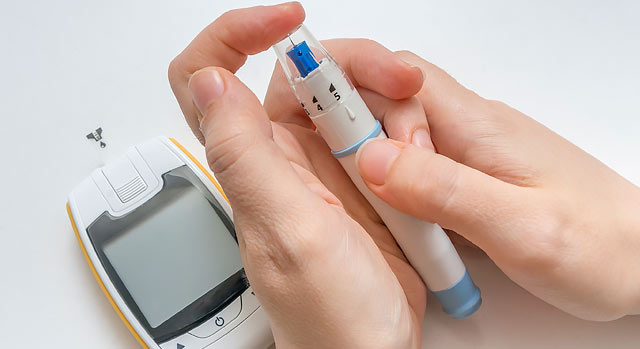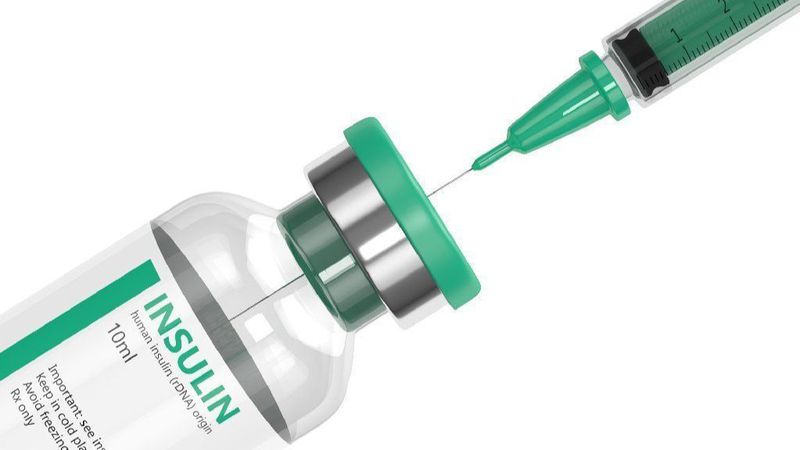
Challenging Case Scenarios in Diabetes Management
Challenging Case Scenarios in Diabetes Management
- ANIL KUMAR VIRMANI , MD, DRM, FICP, FIACM, FACP, FDI
FELLOW INDIAN COLLEGE OF PHYSICIANS
FELLOW INDIAN ASSOCIATION OF CLINICAL MEDICINE
FELLOW AMERICAN COLLEGE OF PHYSICIANS
FELLOW DIABETES INDIA
CONSULTANT PHYSICIAN & CARDIO-DIABETOLOGIST,
REGIONAL FACULTY,PHFI (CCEBDM / CCGDM / ACMDC / CCMTD),
FACULTY, SCHOOL OF DIABETES (Diabetes India)
CHAIRMAN, RSSDI, JHARKHAND CHAPTER (2015-17)
JAMSHEDPUR, JHARKHAND
CASE 1:
- 52 yrs. old woman, H/O diabetes since 10 yrs.; obese with H/O weight gain in last 2 yrs after she started insulin; and tiredness in the afternoons
- Started on anti-depressant
- Follows strict diet, but often has sweating & shakiness , so tends to snack at odd hrs.
- Unable to exercise due to severe OA both knees
- On NPH 45 units + Regular insulin 10 units before breakfast & NPH 35 + Regular 20 before dinner; Metformin 1 gm. OD, Telmisartan 40 mg OD
- FBS – 200, PPBS – 260, BS before dinner – 310 mg.%; HbA1c – 8.9%
- Other parameters normal
- ISSUES :
- (1) Poorly controlled diabetes
- (2) High Insulin dose contributing to weight gain
- (3) Recurrent hypoglycemia with fear leading to snacking
- (4) Similarity of symptoms between hyperglycemia & depression
CLINICAL PEARLS :
- When recommending caloric restriction to obese, insulin-treated patients, decrease insulin doses at the same time
- When assessing obese, insulin-treated patients with diabetes, ask about symptoms of hypoglycemia and overeating.
- Optimising Metformin dose can help decrease insulin requirements and assist with weight loss.
- Addition of SGLT2i / Basal Insulin + GLP1 RA can further reduce Insulin dose & reduce weight
- Treating hyperglycemia can alleviate symptoms of depression.
CASE 2 :
- 35 yrs. old male with H/O Diabetes since 2 yrs., on Tab. Metformin 2 gms. And Tab. Glimiperide 4 mg. daily
- Unintentional weight loss of about 8 Kg in last 2 yrs.; BMI 20 Kg/m2
- FBS – 180, PPBS – 260, HbA1c – 9.3%
- Next Option ?
- Serum C-Peptide – 0.34 ng/ml (Normal 0.8-3.0); GAD 65 : < 1 U/ml (Normal <1 U/ml); IA-2:4 U/mL (normal <0.8 U/mL)
- LADA à Started on Insulin Glargine & Novorapid. OHA stopped
- After 2 mths. à FBS 110, PPBS 150; HbA1c – 6.9 %
Immunology of Diabetes Society (IDS)
(Three criteria to standardize the definition of LADA)
- Age usually ≥30 years
- Positive titer for at least one of the four autoAb [islet cell autoAb (ICA), autoAb to glutamic acid decarboxylase (GAD), tyrosine phosphatase–related islet antigen 2 (IA-2), and insulin autoantibodies (IAA)]
- Has not been treated with insulin within the first 6 months after diagnosis
MANAGEMENT OF LADA
- In addition to insulin, other therapy options that preserve β-cell function, including DPP4i, GLP1-RA, and thiazolidinediones, could be considered for patients with LADA.
- Conversely, therapy options such as sulfonylureas that increase the rate of deterioration of C-peptide secretion, further depleting insulin levels, should be avoided
CASE 3
- A 40 yrs. old female, Diabetic since 5 yrs. well-controlled (FBS-110 mg.%; PPBS- 150 mg.%; HbA1c-6.8%) on Tab. Metformin 1 gm. BD & Tab. Glimiperide 4 mg. OD
- Developed Auto-immune Haemolytic anemia, was treated with Tab. Prednisolone 60 mg./day
- After 6 mths. of steroid therapy, presented with FBS-140; PPBS-270; HbA1c-8.0%
How to manage ?
Steroid-induced diabetes mellitus (SIDM) is defined as an abnormal increase in blood glucose associated with the use of glucocorticoids in a patient with or without a prior history of diabetes mellitus
TREATMENT OF SIDM
- Different management strategy than non-steroid-induced diabetes à PPHG is the dominant feature
- Insulin à Basal bolus insulin therapy remains the most flexible option for patients and includes three components: basal insulin, prandial insulin and a supplemental correction factor insulin
- In general, however, timing of glucocorticoids, to a midday or an evening meal with concomitant administration of intermediate acting insulin, is judicious.
- Metformin à is not recommended for SIDM because of its many relative or absolute contraindications, which include nausea/vomiting, hypoxia and liver or kidney disease
- SU à Do not specifically target PPH and thus long-acting agents may be associated with hypoglycemia if the patient does not eat meals regularly. However, SU used once daily in the morning may best manage the glucose excursion associated with a once daily oral steroid
# For patients with mild hyperglycemia who are unable or unwilling to give injections of insulin, a trial of short-acting secretagogues such as Glinides taken before meals could be consider
# There is little evidence for the use of GLP-1RA or SGLT-2i in the management of steroid-related diabetes.
DPP-4 inhibitors have been studied in a small number of people in hospital, although not specifically for use in people with steroid-induced diabetes.
# Given the relative lack of evidence to assure the efficacy and safety of the newer pharmacotherapies of those in hospital, we do not recommend their use within this guideline
Short-term courses (< 3 days) of steroids may only require closer monitoring, but longer courses will require a review of glucose-lowering therapy and may result in a switch from oral agents to insulin.
CASE 4
- 44-year-old, previously healthy woman presented with progressively worsening dry mouth, polyuria, and polydipsia for 6 weeks; No F/H of Diabetes; She had also lost 7 kg weight over the past 3 months
- FBS – 190 mg.%; PPBS – 340 mg.%; HbA1c – !2.5 %; BMI of 23.2 kg/m2; Urine positive for Ketones (> 7.8 mmol/L)
- Treated with Intensive insulin therapy & I/V fluids;
- After two weeks, her insulin requirements started coming down, and due to recurrent hypoglycemia, her insulin was stopped after 2 mths.
- 2 mths. After stopping all medications à FBS – 100 mg.%; PPBS – 148 mg.%; HbA1c – 6.4 %; Serum C-Peptide – 695 pmol/L (Normal – 364 to 1655 pmmol/L); Anti-GAD Ab. & Anti-islet cell Ab. Negative
- What is the Diagnosis ?
Atypical or ketosis-prone T2DM
(Flatbush Diabetes)
- Unprovoked DKA in association with a history of polyuria, polydipsia, and weight loss for less than 6 weeks
- Although most patients undergo spontaneous remission requiring discontinuation of insulin therapy within a few weeks, an estimated 60% to 70% of patients relapse within 2 years and require either oral hypoglycemic agents or insulin à Close follow-up (1)
- Characterized by the absence of markers of autoimmune β-cell failure, including antibodies against islet cells, insulin, and GAD
- Metabolic studies à Transient secretory defect of β cells during the acute phase, with 60% to 80% improvement in insulin-secreting capacity during remission à coupled with a concomitant severe reduction in insulin sensitivity during the acute hyperglycemia phase, which is improved by 200% upon restoration of normoglycemia
- LADA à a lower BMI and are less likely to respond to diet changes and oral hypoglycemic agents; Positive Ab.
- “Honeymoon phase” of T1DM à characterized by a period of decreasing insulin requirement a few weeks after the initial diagnosis and initiation of insulin therapy à This phase can last several weeks to months; Positive Ab.
- Acute hyperglycemia in T2DM à typically does not present with acute weight loss, polyuria, polydipsia, hyperglycemia, and profound ketosis
CLINICAL PEARLS :
All patients who present with DKA may not require life-long insulin
# Early management of atypical diabetes is similar to that of T1DM; however, a rapidly falling requirement for insulin over the first few weeks should alert physicians to the possibility of this diagnosis.
# Patients with atypical diabetes typically have negative markers of autoimmune β-cell failure.





